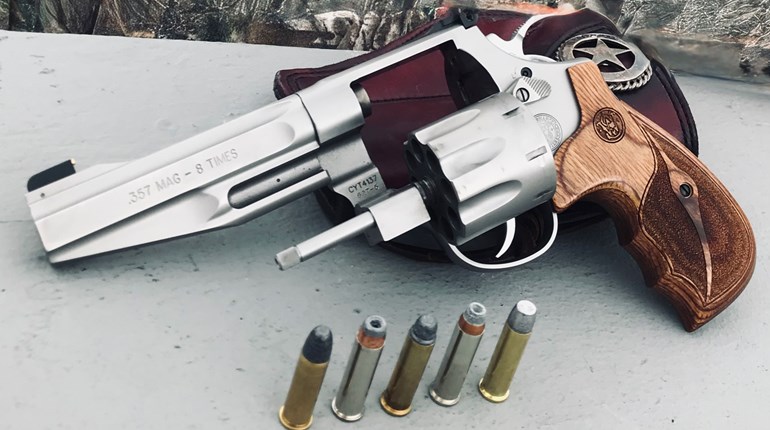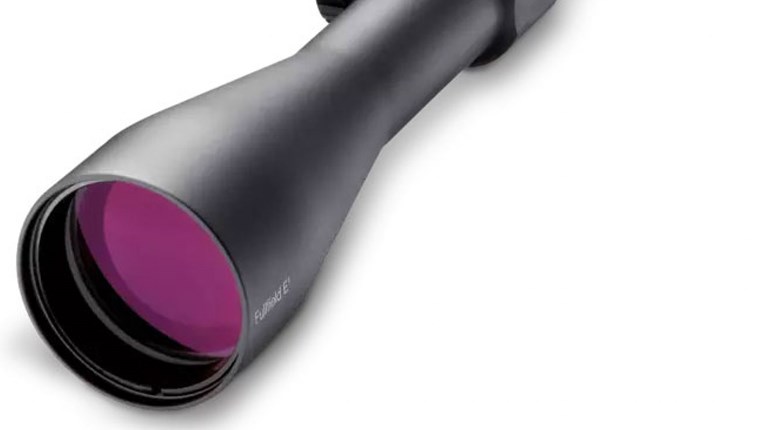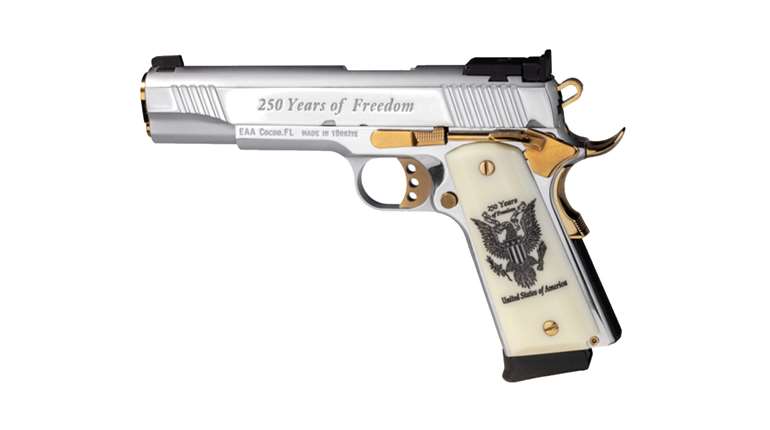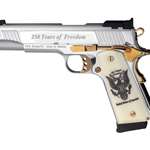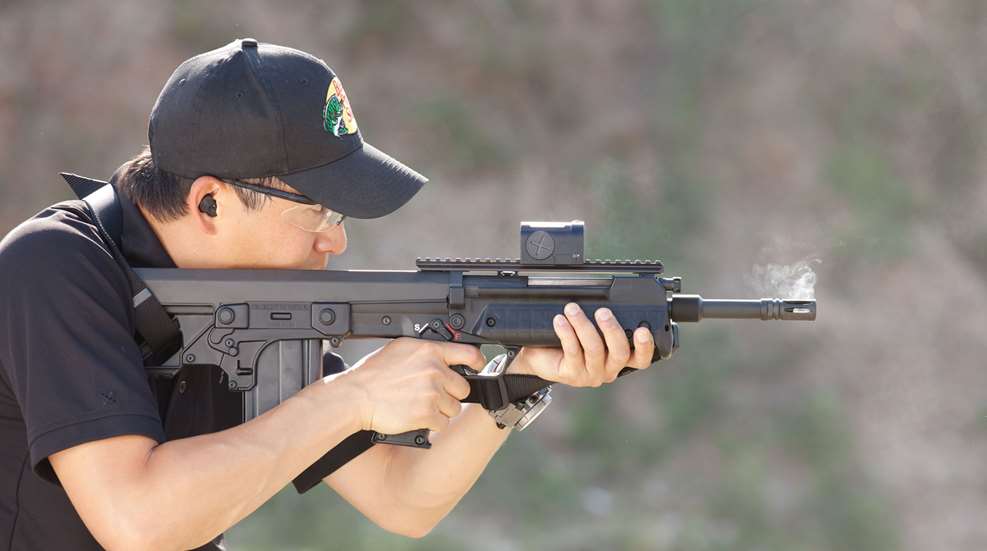
When you look at a modern bullpup gun, their futuristic look and sleek design might make you assume these are new guns, but in fact, the bullpup has been around for well over 100 years. The design was originally developed in 1901 in England. But what are they?
Simply put, a gun designed as a bullpup has its action and magazine located behind the trigger instead of in front of it. The major advantage of this is that it allows the gun to be more compact and, in some cases, well-balanced. These guns handle well in tight spaces, and in fact, the name “bullpup” is meant to be descriptive—it’s said that the design is named after bulldog puppies, which, in turn-of-the-century England, were considered “squat and ugly but still aggressive and powerful.”

Springfield Hellion bullpup
In a standard long-gun design, like the AR-15 for example, the components each take up their own space: First comes the buttstock, then the grip/trigger, then the action and magazine. In a bullpup, all of that is compressed: The action and magazine are essentially built into the stock, with the trigger in front. It results in the whole gun being quite a bit shorter than an equivalent standard design. Because of that, they’re especially useful in tight tactical situations, such as inside an armored vehicle. A number of countries issue bullpup rifles to their military for this reason, while others (the U.S. included, for the most part) avoid them because of issues we’ll address.
Benefits of a Bullpup
Because the action and trigger take up less space than in a conventional firearm, bullpups are considerably more compact, and they can be built to a smaller overall length without shortening the barrel. This is a big advantage, as longer barrels offer better ballistics in general. The longer the barrel, the more completely the expanding gasses generated at the shot can burn, which means the gun can achieve higher velocities than what you’ll get out of a shorter barrel.
In many bullpup designs, the weight distribution is nicely balanced, as the weight of the action balances out the weight of the barrel. This isn’t a given across all brands and models, but where it is, it can make these guns easier and more comfortable to hold up for long periods of time, and it can even help manage felt recoil.
Shorter, faster velocity, more comfortable to hold and shoot for a lot of shooters—what’s not to love? Well, several things, actually.

IWI Tavor X95 bullpup
Drawbacks of a Bullpup
Because the action is built into the stock, a bullpup (with some exceptions on the market) ejects its spent brass from the part of the gun that’s pressed up against your cheek. For one thing, this means gases in many designs are venting right in your face. For another thing, while modern guns are quite safe to shoot, if anything does go wrong in that action, instead of going kaboom a few inches in front of your nose, the kaboom is smashed up against your face.
In addition, this ejection location means these guns aren’t ambidextrous (without a lot of tinkering) and can’t even be shot from your weak side. In tactical and especially military situations where entire armies are being trained on the same firearm, that’s a big hurdle.
Secondly, bullpup triggers are generally not as good as what you can get in a traditional gun. Because of the distance and the linkages between the trigger and the hammer, bullpup triggers tend to be soft. Of course, this can negate some of the accuracy the long barrel affords.
Third, the action being built into the stock means these guns aren’t adjustable for length. It either fits you or it doesn’t.
Should You Buy One?
To the tactically minded, bullpups are fun to shoot, comfortable to handle, and just cool to own. The design appeals to a lot of people, as does the ability to retain accuracy and velocity by using a standard-length barrel in a much more compact gun. Companies like IWI, Springfield, Steyr, Kel-Tec, EAA, FN and more are making rifles and even shotguns in this configuration, including some innovative designs that overcome some of the drawbacks discussed above—a few even claim to be fully ambidextrous by ejecting downward.
The ambidextrous issue isn’t a problem for a single owner who can set it up the way they want it and leave it alone. If you’re interested in a bullpup for home defense or just for plinking at the range, and you don’t mind an imperfect trigger but the idea of a shorter gun with a standard barrel appeals to you, go for it.












